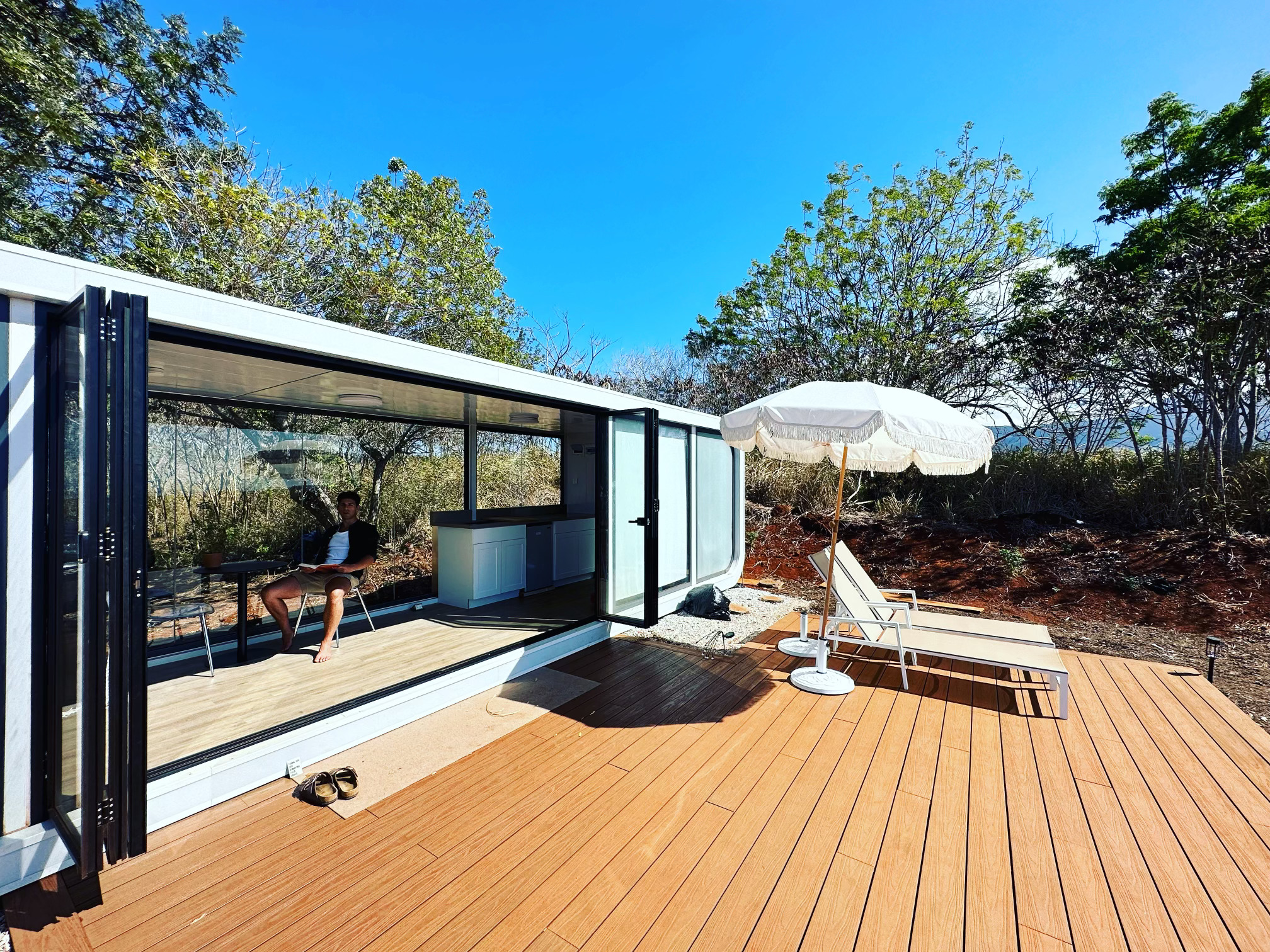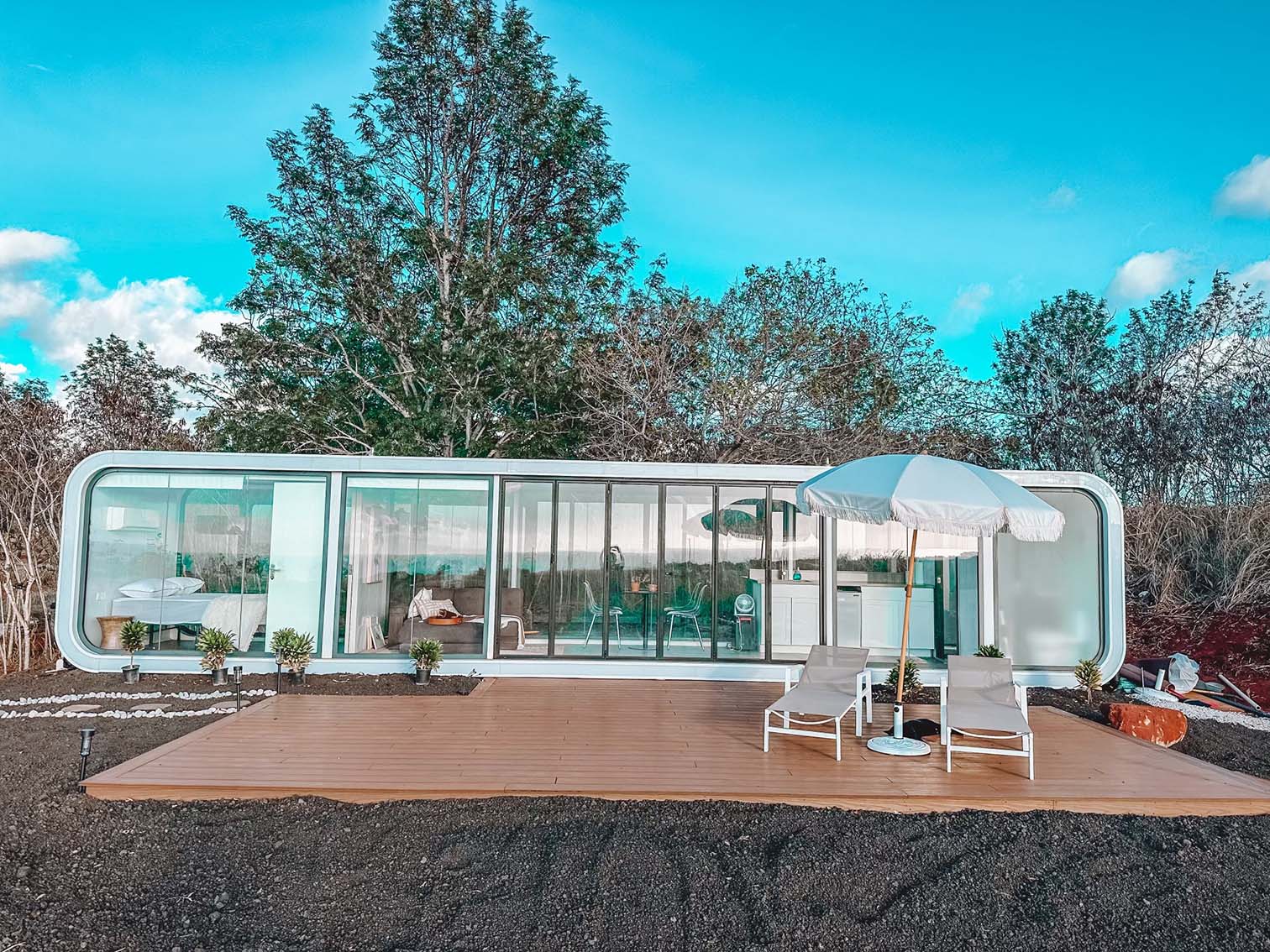In a world where the "bigger is better" mantra is slowly giving way to minimalism, Accessory Dwelling Units (ADUs) are leading a quiet revolution in the housing sector. These secondary, smaller living spaces are often tucked into backyards or refashioned basements, offering a new frontier of possibilities.
They're a win-win, addressing affordability and space crunches while subtly changing the fabric of our communities. In this blog, we'll navigate the uncharted waters of ADUs, exploring their untapped potential, the challenges dampening their broader adoption, and their ripple effects on our neighborhoods.
Reasons Behind the Extreme Rise of ADUs
The narrative around the American Dream is getting a facelift, and ADUs are the new architects of change. Think of them as the modern homesteaders' secret weapon, rising in popularity for many compelling reasons.
1. Affordability:
As the saying goes, "Money talks," and when it does, ADUs answer with a compelling pitch on affordability. Traditional homes are increasingly out of reach for many, making the financial aspect of ADUs incredibly appealing. Not only do they cost less to build, but they can also serve as income-generating rental properties, offering a financial cushion that makes homeownership less burdensome.
2. Urbanization:
"Build it, and they will come," says the age-old proverb. Well, people are flocking to cities in search of opportunities, and urban areas are struggling to keep up. ADUs are emerging as a sustainable alternative to traditional urban sprawl, providing a way to increase housing stock without sacrificing more land or changing the community's character.
3. Housing Crises:
When life gives you lemons, make lemonade. And when society faces a housing crisis, the creative solution increasingly looks like ADUs. These units offer a quick, cost-effective way to increase housing options, alleviating pressures on a saturated market and providing new pathways to homeownership for those who otherwise couldn't afford it.
4. Multigenerational Living:
Family values are getting a spatial redesign as ADUs become a preferred choice for multigenerational living. They provide the proverbial "best of both worlds"—proximity for family support and separate space for autonomy. Grandparents, young adults, and extended family members find a unique blend of independence and interconnectedness that only ADUs can offer.
4 Types of ADUs That Will Shape the Future
ADUs are the Swiss Army Knife of tomorrow's housing market—each type serving a unique need. Curious about which ones will be game-changers? Let's know the options that could turn our neighborhoods on their heads.
1. Detached:
The detached ADU is the solitary artist of the bunch. It's a standalone structure, often found in backyards, and provides a distinct separation from the main house. This type is ideal for those seeking a more private dwelling, creating an independent living environment.
2. Attached:
ADUs are the friendly neighbors in this community of options, sharing a wall or two with the primary residence. These units are an excellent choice for families looking to keep their loved ones close yet offer them a semblance of autonomy. It's the modern twist to the old saying, "Good fences make good neighbors."
3. Garage Conversions:
If the detached and attached ADUs are purpose-built structures, garage conversions are the ingenious improvisers. These units transform existing garage spaces into functional living areas, turning yesterday's storage rooms into today's cozy studios.
4. Internal:
Last but not least, internal ADUs are the ultimate space optimizers carved out of the existing footprint of the main residence. Think basement apartments or attic lofts. These types are the epitome of "making the most with what you have," offering an efficient, cost-effective way to expand housing without changing the home's exterior.
Potential for ADUs to Become More Common
The prospect of ADUs becoming as ubiquitous as the traditional family home is not so much a question of 'if' but 'when.' Here are the several factors that are propelling this paradigm shift.
1. Technological Advancements:
Imagine a future where your new living space arrives at your doorstep, as easy to order as an Amazon package. That's the promise of prefabricated ADUs—quick, efficient, and increasingly budget-friendly. With the flourishing of smart home technology, where a smartphone can control climate and security, ADUs are both efficient and irresistible.
2. Policy Support:
Ever felt like bureaucracy is a maze? Well, the good news is that the hedges are being trimmed. Cities are now rolling out the red carpet for ADUs, ditching the red tape. From streamlining permits to rethinking zoning laws, we're going from a regulatory straitjacket to what feels like a guided tour. Plus, the financial perks like tax incentives are sweetening the deal, turning ADUs into not just a feasible but an attractive option.
3. Market Trends:
ADUs are becoming the unsung heroes in the fight against housing shortages. With cities bursting at the seams and populations growing, the demand for ADUs is scaling new heights. Investors are getting into the action, fueling a wave of innovation and affordability in the ADU market.
What Challenges are Holding Back the ADU Market?
ADUs may be riding a wave of popularity and promise, but even the best surfers must navigate choppy waters. The journey to mainstream acceptance isn't without its challenges, ranging from legal red tape to cultural perceptions that can put the brakes on even the most well-intended ADU projects.
1. Legal Barriers:
While some cities are rolling out the welcome mat for ADUs, others are still tangled in red tape. Zoning laws can be the bouncer at the door, blocking entry no matter how enticing the ADU proposition may be. And it doesn't end there. The labyrinth of permits and fees can feel like a minefield, taxing both patience and pocketbooks, and slowing down the ADU train before it can leave the station.
2. Financial Barriers:
Building an ADU can be as challenging as filling a swimming pool with a teaspoon if your financial resources are limited. The high costs of construction can quickly escalate, and unfortunately, the world of financing hasn't caught up. Traditional loans and mortgages often don't fit the ADU mold, leaving many homeowners scrambling to find alternatives.
3.Social and Cultural Barriers:
We've all heard the phrase "Not in my backyard," and ADUs are no strangers to this sentiment. Neighborhood opposition can stall an ADU faster than you can say "zoning appeal." Moreover, let's not overlook the elephant in the room: stereotypes. ADUs still carry a cultural baggage of being considered second-rate housing. Changing these perceptions requires more than just policy; it requires education and dialogue.
For ADUs to truly become a cornerstone of modern housing, it will require us to bridge policy gaps, financial divides, and cultural barriers. As the saying goes, "Rome wasn't built in a day," and neither will the ideal ADU landscape. It will take time, effort, and a willingness from all of us to see beyond the limits of traditional housing. Yet the rewards—a more inclusive, flexible, and adaptable housing market—could very well be worth the struggle.
Impact on Communities
ADUs are more than mere housing alternatives; they're transformative tools for communities. This impact manifests socially, economically, and environmentally.
1. Social Impact:
ADUs foster social inclusivity and community cohesion. They offer diversified housing options that cater to various demographics—be it multi-generational families or young professionals, enhancing the social fabric of neighborhoods. Moreover, they provide older adults a dignified way to age near their families, enriching the community life cycle.
2. Economic Impact:
Contrary to the misconception that ADUs lower property values, well-designed units can be lucrative assets. They not only offer homeowners an extra income source but also add to the property's functional appeal. More importantly, by increasing the local population, ADUs stimulate local commerce, creating a financial ripple effect that benefits the community at large.
3. Environmental Impact:
ADUs serve as an antidote to urban sprawl by making smart use of existing land. They contribute to efficient, concentrated community designs that make optimal use of infrastructure and natural resources. Moreover, contemporary ADUs are often designed with energy efficiency in mind, setting a new standard for environmentally conscious living.
By shaping social bonds, boosting economies, and promoting sustainable living, ADUs have proven to be catalysts for community enhancement.
Conclusion
The future of ADUs looks promising, with burgeoning technological advances, shifting policy landscapes, and evolving market trends all pointing toward a new era of housing solutions. Yet, the journey is fraught with challenges—from legal and financial obstacles to social and cultural roadblocks—that need addressing for ADUs to reach their full potential. As we've seen, the impact of ADUs extends beyond individual homeowners, contributing to community building, economic growth, and environmental sustainability.
So, what can be done to expedite this process and make the ADU dream a reality for more people? First, it's high time for policymakers to revise outdated zoning laws and offer financial incentives. Secondly, community leaders and citizens must work to educate neighborhoods on the multi-faceted benefits of ADUs to overcome social stigmas.
If you're interested in becoming part of this transformative housing solution, we invite you to explore the offerings at NanoNest. Our mission is to make ADU construction seamless, efficient, and affordable. Join us in shaping the future of housing and creating more vibrant, sustainable communities. Let's build better, together.


